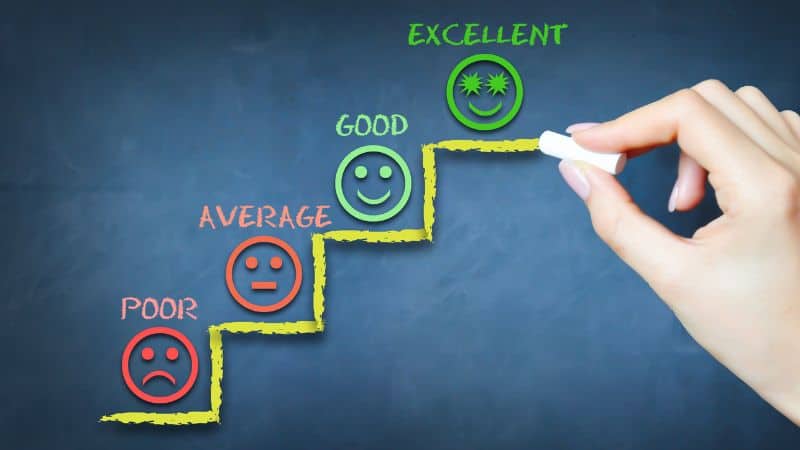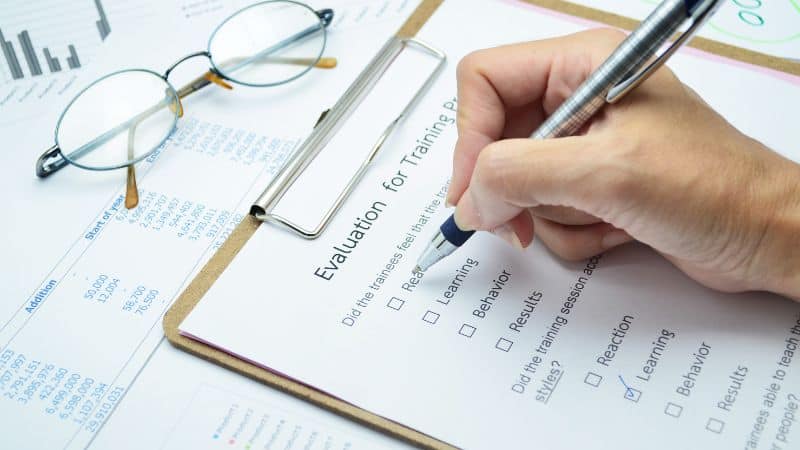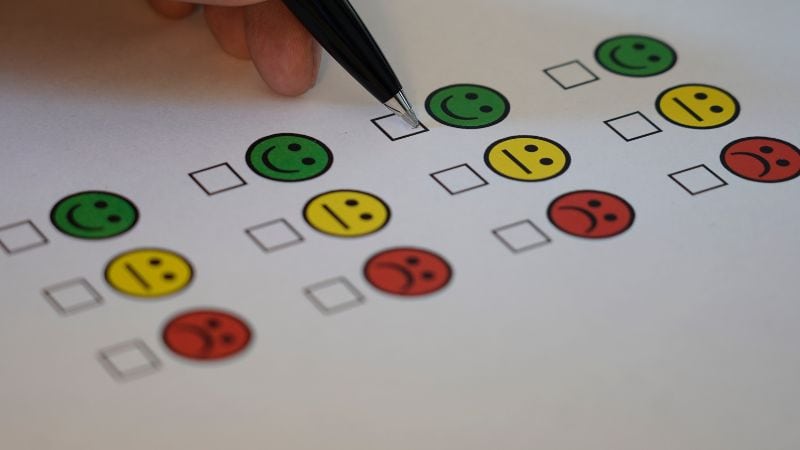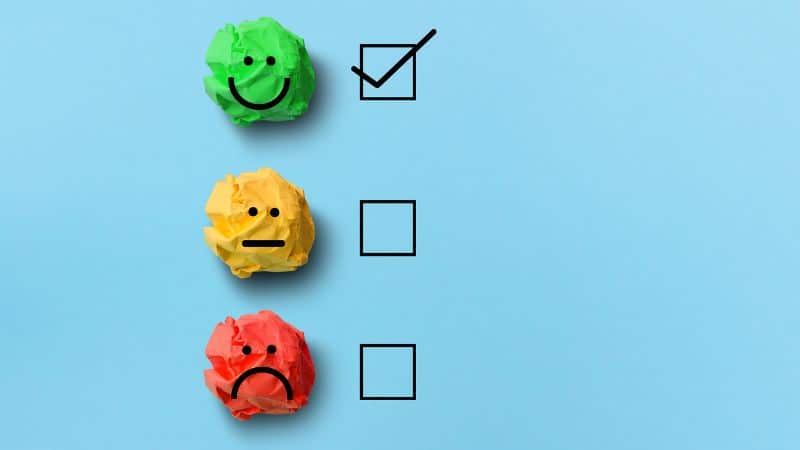You are going to discover Kirkpatrick’s 4 Levels of Evaluation. This is a method to check if training sessions are effective. This is crucial for professionals as it ensures their training sessions are hitting the mark and achieving their goals.
Ever sat through a work training and wondered if it actually made a difference? Here’s a question to ponder: Does your company use the 4-level training evaluation? If not, you might be missing out on some big benefits.
Think of it this way: imagine spending money on a fancy new tool for work, but never checking if it does its job right. That’s what happens when companies don’t evaluate their training sessions. They might spend a lot on them, but never really know if they’re worth it.
For managers, especially those not too familiar with training jargon, this can be a bit confusing. But here’s the good news: there’s a simple, structured way to check if your training is effective. It’s called the 4-level training evaluation.
In this guide, we’ll break it down step by step. We’ll explore how this method can help ensure that the training your team gets is not just good but great.
Ready to dive in? Let’s get started.
The Overlooked Importance of Evaluating Training
Meet David, a manager at TechSolutions, a fast-growing tech firm.
Every quarter, his team sits through multiple training sessions, often led by industry experts. They’ve had sessions on everything from the latest software tools to effective team communication.
David would often overhear his team discuss the fancy snacks or the charismatic speaker, but rarely the skills they gained or how they’d use them.
One day, while going over the company’s expenses, David noticed a hefty sum dedicated to these training sessions. It got him thinking, “Are we really getting our money’s worth?”
David decided to chat with a few team members. “Did that last training help with your current project?” he would ask. More often than not, the response was a hesitant, “Well, it was interesting, but I haven’t really used much from it.”
The problem became clear. While the training sessions were enjoyable, there was no clear way to measure if they made a real difference in day-to-day work. David realized that without evaluating the training’s impact, they might as well be tossing money out the window.
This story isn’t unique to David or TechSolutions. Many companies invest in training without really checking its impact. It’s like buying a plant and never checking if it needs water or sunlight. Over time, that plant – much like a team’s potential – might just wither away.
Evaluating training isn’t just about saving money. It’s about making sure that the time and effort put into learning brings real, positive change for everyone involved. If companies like TechSolutions don’t start checking the value of their training, they risk missing out on a chance to grow, improve, and thrive.

The Common Excuse: Lack of Knowledge
Picture Sarah, an enthusiastic training coordinator at HealthNet, a nationwide healthcare provider. She’s passionate about bringing the best speakers and topics to her sessions.
Every time a training wraps up, she’s swamped with compliments about how engaging and insightful the trainer was. With all this positive feedback, it’s easy for Sarah to assume that everything’s going perfectly.
But here’s a surprising twist: Even Sarah, with her vast experience in arranging training, rarely dives deep into evaluating their real-world impact. “I mean, everyone seemed happy, so it must’ve been beneficial, right?” she often thought.
One evening, over coffee, Sarah met up with her friend Lisa, who works at a different company. Lisa mentioned a new evaluation method they’d adopted, which showed exactly how much the training sessions improved their team’s skills. Curious, Sarah asked, “How do you do that?”
Lisa explained, “Well, it’s more than just asking if people liked the session. We measure what they learned, how they’re using it, and if it’s making a difference in their work.”
Sarah’s eyes widened. It was a lightbulb moment. She realized that while she knew a lot about organizing training, she had missed out on a critical piece: measuring its true impact.
This scenario isn’t rare. Many professionals, even those in the training world, don’t fully evaluate the results of their sessions. And if the experts sometimes skip this step, it’s easy to see why non-training managers might feel lost. It’s like knowing how to cook a fancy dish but not checking if it tastes good.
The takeaway? Don’t just assume training is effective because it looks or feels right. Dig deeper. Because understanding the real impact is the key to making training truly valuable.
What is Training Evaluation and Why Does It Matter?
Imagine you’ve just baked your first cake. It looks good, but how do you know if it tastes right? You’d probably take a bite or ask someone else to do the same. That’s a bit like training evaluation – it’s the ‘taste-test’ for training sessions.
Training evaluation is the process of checking how effective a training session was. Instead of just going by how things looked or felt, it’s about measuring the real results. Did people actually learn? Are they using those new skills? Is the company benefiting from the training?
Now, why should this matter?
Continuous Improvement: Just like a chef tweaks a recipe based on feedback, evaluating training helps make future sessions better. If one topic was too hard, it can be simplified next time. If another topic was super useful, it can be covered in more detail.
ROI (Return on Investment): Training can be expensive. Companies spend money on trainers, materials, venues, and more. By evaluating, companies can see if they’re getting good value. It’s like checking if that expensive cake mix was worth the price based on the cake’s taste.
Informed Decision-Making: With proper evaluation, managers can make smarter choices. They can pick which training topics to repeat, which to ditch, and where to invest more.
And this isn’t just ‘cake talk’. Research backs it up:
A study from the Association for Talent Development found that companies that regularly evaluate training see better employee performance and higher profits.
The Institute for Corporate Productivity reported that high-performing companies were twice as likely to evaluate training compared to their counterparts.
In short, training evaluation is the compass that guides companies towards effective learning. Without it, you’re navigating blindly, hoping for the best. But with it, you’re on a clear path to success.

The 4-Level Training Evaluation in Simple Terms
Imagine building a house. You wouldn’t just focus on the foundation and ignore the walls or roof, right? Similarly, to really understand the impact of training, we need to look at it from multiple angles. That’s where the 4-level training evaluation comes in.
Let’s break it down using our house-building analogy:
Reaction (The Foundation):
This is the immediate feedback right after training. Did participants find the session useful? Was it engaging?
Just as a house needs a strong base, our first step in evaluation checks if we’re starting on the right foot.
Learning (The Walls)
Here, we see if participants really grasped the concepts. Did they actually learn the new skills or knowledge?
Walls give a house structure. Similarly, checking what participants have learned ensures the training had substance.
Behavior (The Interior)
This level checks if participants are using what they learned in their daily jobs. Are they applying the new skills or methods?
Just as you’d furnish a house to make it functional, this step ensures the training is being put to use.
Results (The Roof)
The final level measures the overall impact on the company. Has there been an improvement in performance, sales, or any other measurable outcome due to the training?
A roof completes a house and protects it. Similarly, this level ensures the training delivered tangible benefits and was worth the investment.
So, just as you wouldn’t build only half a house, it’s essential to evaluate training from all these levels.
Each one adds a crucial layer, ensuring that the training isn’t just good—it’s effective and delivers real results.

Carla’s Journey to Training Evaluation
Carla, the dynamic department manager at FreshFutures Corp, always had a knack for ensuring her team had the best resources and training.
However, when it came to measuring the real impact of those training sessions, she felt a bit out of her depth. Despite overseeing a team of over 200 members and regularly investing in their training, she couldn’t quite pin down the tangible benefits they were gaining.
One evening, after reviewing the budget allocations for training, she thought, “I need to understand this better. I want to know if we’re genuinely getting value from these sessions.”
And that’s when Carla remembered a seminar she had attended where I mentioned the importance of evaluating training effectiveness.
She quickly reached out to me with an invitation to meet and discuss her concerns.
We met at a quiet cafe downtown.
Over cups of coffee, Carla candidly shared her dilemma, “I see the enthusiasm in my team after every training session, but I wonder, are these sessions truly transformative for them? How can I measure their real impact?”
Nodding understandingly, I replied, “Carla, your concern is valid. What you’re seeking is a structured way to gauge the effectiveness of training. Have you ever delved into the 4-level training evaluation?”
She looked intrigued but admitted her unfamiliarity.
Over the next hour, our conversation flowed seamlessly as I explained the 4-level training evaluation model. Through our dialogues, I painted a picture of how each level could bring clarity to her concerns and help assess the real benefits of training.
As we concluded, Carla looked like someone who had just found a missing puzzle piece. She realized that this approach was precisely what she needed to ensure her team wasn’t just being trained, but was growing, evolving, and benefiting from every session.
For Carla, and hopefully for many managers reading this, understanding the 4-level training evaluation isn’t just about metrics; it’s about ensuring that each training session is a step forward towards excellence.

Level 1: Reaction
At its core, Level 1: Reaction is all about immediate feedback. It’s the first and most direct response participants have after a training session. Think of it like the first impression after watching a movie or tasting a new dish. While this level doesn’t dive deep into the actual learning or its long-term impact, it provides crucial insights into the participant’s experience.
Why is this important? Well, if participants find a session boring, irrelevant, or too complex, they’re less likely to engage in future training or even apply what they’ve learned. By understanding their initial reactions, trainers and managers can fine-tune future sessions for better engagement and effectiveness.
A study by Brandon Hall Group showed that positive initial reactions to training sessions increased the likelihood of participants applying their learned skills by up to 65%.
Research from the Journal of Applied Psychology found that trainees’ reactions were closely linked to their motivation to transfer learned knowledge to their job roles.
Carla: “So, Level 1 is just about getting feedback right after the training, like those feedback forms we usually hand out?”
Consultant (Me): “Yes, but it’s a bit more nuanced than just ‘Did you like it?’. It’s about understanding how participants felt about the training. Was it relevant to them? Did they feel it was a good use of their time? Did they find the content engaging?”
Carla: “We do get feedback forms, but they mostly revolve around the venue, food, or the speaker’s style. I’ve never really seen them as a measure of the training’s effectiveness.”
Consultant: “That’s a common misconception. While feedback on logistical aspects is good, what’s crucial is to gauge participants’ reactions to the content and delivery of the training itself. It sets the stage for the deeper levels of evaluation.”
Carla: “I see. So, if the reaction is positive, it’s a sign that the training was effective?”
Consultant: “Not necessarily. A positive reaction is a good starting point, but it doesn’t guarantee learning or behavior change. It simply means participants found the session engaging and relevant. Think of it as the foundation. A strong foundation is essential, but you need to build upon it.”
Getting Level 1 Right: To make the most of Level 1 evaluation, ensure your feedback forms or surveys are well-structured. Instead of just focusing on logistical aspects, include questions about the training content, its relevance to participants’ job roles, and its perceived value. This will provide a more rounded understanding of their initial reactions and set the stage for deeper evaluation in the subsequent levels.
Carla: “Alright, so if we’re going beyond just logistical feedback, what are some other ways or methods to gauge reactions? I want to ensure we’re getting a holistic view.”
Consultant (Me): “Great question, Carla. Beyond the standard feedback forms, there are several other methods to gauge reactions effectively:
Interactive Polling: Using tech tools, you can poll participants immediately after a session. This provides real-time reactions.
Focus Groups: Gathering a small group of participants after training can offer deeper insights into what they liked or disliked.
One-on-One Interviews: Sometimes, participants may have feedback they’re more comfortable sharing in a private setting.
Observational Feedback: Simply watching participants during the training can reveal a lot. Are they engaged, taking notes, asking questions, or do they seem disinterested?
Digital Feedback Platforms: Using platforms where participants can give anonymous feedback can lead to more honest reactions.”
Carla: “I like the sound of interactive polling and digital platforms. We’re a tech-savvy bunch, and I think these methods could resonate well with my team. But I’m curious, with so many methods available, how do I choose the right one?”
Consultant: “It really depends on your team and the training’s context. For larger groups, digital methods like polling might be more efficient. For more intensive or specialized training sessions, focus groups or one-on-one interviews could provide deeper insights. The key is to ensure that whatever method you choose, it should allow participants to express their genuine reactions without any reservations.”
Carla: “That makes sense. So, it’s not just about gathering reactions, but understanding them deeply to fine-tune our training approach.”
Consultant: “Exactly! Level 1 is all about setting the right tone and making those initial tweaks to enhance the overall training experience.”
Choosing the Right Method: When deciding on a Level 1 evaluation method, consider the size of your audience, the nature of the training, and the comfort level of participants. Also, don’t shy away from mixing and matching methods. Sometimes, combining a digital feedback platform with observational feedback can give you a more comprehensive picture of participants’ reactions.

Level 2: Learning
If Level 1 was about the initial impression or ‘taste-test’ of the training, Level 2 dives into the real substance: the learning. It focuses on measuring what participants have actually absorbed from the training. It’s akin to checking if someone, after reading a book, can explain its core ideas.
The significance? Well, training sessions aim to impart knowledge or skills. If participants aren’t truly learning, then it’s a clear sign that something’s amiss, be it in the content, delivery, or both.
Carla: “So, if Level 1 is about initial reactions, Level 2 is about checking if my team has really grasped the content?”
Consultant (Me): “Exactly, Carla. It’s one thing for participants to enjoy a training session, but it’s another for them to truly understand and remember what was taught.”
Carla: “Alright, but how do we accurately gauge this? It’s not like school where we have exams after every lesson.”
Consultant: “Well, in a way, it can be similar. There are various tools and methods to measure learning:
- Quizzes and Tests: These can be done right after the training to test knowledge retention.
- Practical Exercises: For skill-based training, having participants demonstrate a task can show if they’ve mastered it.
- Group Discussions: Encouraging participants to discuss key takeaways can reveal their understanding.
- Reflection Papers or Journals: Asking participants to jot down what they’ve learned can offer insights into their comprehension.
- Feedback from Trainers: Sometimes, trainers themselves, through observation, can gauge which parts of the training were well-understood and which weren’t.”
Carla: “These methods sound more intensive than Level 1. But I see their value. If we’re investing in training, we need to be sure that the content sticks. But, are these evaluations done immediately after training?”
Consultant: “Typically, yes. Level 2 evaluations are done soon after the training when the content is fresh in participants’ minds. The goal is to see immediate retention and understanding. However, don’t confuse this with long-term application—that’s something we’ll delve into with Level 3.”
Carla: “Got it. So, it’s about ensuring that the immediate takeaways from the training are solid before we move onto seeing their real-world application.”
Maximizing Level 2 Learning Evaluations: To get the most out of Level 2 evaluations, it’s crucial to create a safe environment where participants feel comfortable showcasing their understanding without fear of judgment. Encourage open discussions, reward correct answers in quizzes, and provide constructive feedback on practical exercises. The aim is not just to evaluate but to reinforce learning.
Carla: “You know, I’ve attended numerous training sessions, both in our company and in previous workplaces. It strikes me as odd that despite its importance, I rarely recall undergoing Level 2 evaluations. Why is that?”
Consultant (Me): “That’s a very astute observation, Carla. There are several reasons for this:
- Time Constraints: Many organizations feel that taking additional time for evaluations post-training might extend the duration, especially when they’re already packed with content.
- Resource Limitations: Crafting meaningful evaluations – be it quizzes, exercises, or discussions – requires extra effort and expertise. Some organizations might not have the resources or might not prioritize this.
- Fear of Negative Feedback: Sometimes, there’s a hesitation to measure immediate learning outcomes. What if participants didn’t learn much? It could reflect poorly on the trainers or the training content.
- Lack of Awareness: Surprisingly, not all training coordinators are aware of the depth and importance of the 4-level model. They might focus primarily on content delivery, assuming that an engaging session automatically equates to effective learning.
- Overemphasis on Reaction: As you mentioned earlier, many focus on Level 1 evaluations. If the feedback is positive, they might mistakenly assume that learning has occurred, without diving deeper to confirm.”
Carla: “It’s a bit unsettling to realize that so many training sessions might not be as effective as they seem. Especially when we consider the investments involved. But now that I’m aware of Level 2, I definitely want to implement it. I want to be certain that my team isn’t just attending sessions but truly gaining from them.”
Consultant: “That’s a commendable approach, Carla. Incorporating Level 2 evaluations will give you a clearer picture of the immediate effectiveness of your training sessions. But remember, it’s just one piece of the puzzle. As we move on to Levels 3 and 4, you’ll see how these evaluations build on each other to provide a comprehensive view of training’s overall impact.”
Overcoming the Level 2 Hurdle: If you’re new to Level 2 evaluations, start small. Even a simple quiz or a brief group discussion post-training can provide valuable insights into learning outcomes. Over time, as you see the benefits, you can explore more intensive evaluation methods. And always remember: the goal isn’t to ‘test’ participants but to reinforce and measure their learning.

Level 3: Behavior
Level 3: Behavior goes beyond immediate reactions and learned content. It’s about observing and measuring how participants apply what they’ve learned in their real-world roles. If Level 1 was the initial taste-test and Level 2 checked the substance, Level 3 ensures that the ingredients from the training are being used in daily recipes at work.
The value of this level is paramount. After all, the ultimate aim of training isn’t just to impart knowledge, but to instigate positive change in behavior, leading to improved performance.
Carla: “Okay, so once we’ve ensured that participants have understood the training content, we move on to see if they’re using it in their day-to-day work. Is that right?”
Consultant (Me): “Exactly, Carla. It’s about tracking the translation of knowledge into action. It’s not enough for someone to know the right thing; they must do the right thing.”
Carla: “That sounds crucial. But how can we accurately track such behavioral changes, especially when they might be subtle or gradual?”
Consultant: “There are multiple methods to assess behavioral changes:
- Observation: Managers or team leads can directly observe employees over time to note changes in behavior, performance, or skill application.
- Feedback from Peers and Subordinates: Sometimes, colleagues or team members can provide insights into an individual’s behavior post-training.
- Self-assessment: Encouraging employees to reflect on and report their behavioral changes can offer valuable insights.
- Performance Metrics: If the training was geared towards specific skills or tasks, any improvement in related metrics can indicate positive behavioral change.
- Case Studies or Real-life Scenarios: Occasionally, presenting employees with situations or challenges and observing their approach can reveal if they’re applying their training.”
Carla: “It sounds comprehensive. But I’m curious, why do so many training programs stop at Level 1 or 2 and don’t venture into Level 3?”
Consultant: “Several reasons, Carla:
- Time Lag: Behavioral changes often don’t manifest immediately. It takes time, sometimes months, to truly see the impact of training on day-to-day behavior.
- Complexity: It’s more straightforward to gather immediate feedback or test knowledge right after training. Tracking behavior, on the other hand, requires more prolonged observation and assessment.
- Lack of Tools or Expertise: Not every organization has the tools or know-how to measure behavioral changes effectively.
- Over-reliance on Earlier Levels: If training gets glowing feedback and shows good knowledge retention, some organizations might mistakenly assume that it’ll automatically lead to positive behavioral changes.”
Carla: “It’s becoming clear to me that to truly reap the benefits of training, we can’t just stop at the surface. We need to dive deep, all the way to Level 3, and even further, I presume?”
Consultant: “Absolutely, Carla. And while Level 3 gives you a clear picture of the training’s immediate application, Level 4 will show you its broader impact, tying everything together.”
Making Level 3 Work for You: When delving into behavioral evaluation, consistency is key. Regularly check-in with employees post-training, encourage open dialogue about their challenges in implementing new skills, and be patient. True behavioral change often takes time but can lead to lasting benefits.
Carla: “Given that we’ve recently had training programs on customer service excellence and presentation skills, how can I effectively implement Level 3 evaluation for these? I’d love some concrete steps to get started.”
Consultant (Me): “Great, let’s tackle them one by one.
Customer Service Excellence:
Observation: Monitor customer interactions, either in person or through recorded calls if permissible. Look for improved communication, empathy, problem-solving, and overall customer satisfaction.
Feedback: Collect feedback from both customers and peers. Surveys post-interaction or monthly feedback sessions with peers can be insightful.
Performance Metrics: Track key performance indicators like customer satisfaction scores, resolution times, or repeat customer percentages. A positive change in these metrics post-training can indicate improved behavior.
Self-Assessment: Ask employees to reflect on challenging customer interactions they’ve had since the training and how they tackled them differently using their new knowledge.
2. Presentation Skills:
Observation: Attend team meetings or presentations where trained individuals are presenting. Note their confidence, clarity, use of visuals, audience engagement, and overall effectiveness.
Feedback from Peers and Subordinates: After a presentation, gather feedback from the audience on the presenter’s effectiveness, clarity, and engagement. This can be done informally or through structured feedback forms.
Self-assessment: Encourage employees to critique their own presentations. They can record themselves and note areas of improvement or strengths.
Real-life Scenarios: Occasionally, organize mock presentation sessions where trained employees present on a topic. This safe environment allows for immediate feedback and learning.”
Carla: “These steps sound doable. I especially like the idea of using real-life scenarios for presentation skills. It not only evaluates but also provides a practice ground for my team. But, won’t all this extra evaluation be seen as added scrutiny or pressure by the employees?”
Consultant: “That’s a valid concern, Carla. The key is to position these evaluations as tools for growth, not scrutiny. Ensure your team understands the intent is to help them apply their new skills effectively and to provide support where needed. Creating a culture of continuous learning and feedback will make these evaluations feel like a natural, constructive part of the process.”
Carla: “I’ll keep that in mind. I’m eager to see how these evaluations will shape our training outcomes in the coming months. And I’m even more intrigued about Level 4 now!”
Creating a Positive Evaluation Environment: When introducing behavioral evaluations, emphasize their purpose and benefits. Celebrate improvements, offer support for challenges, and consistently communicate that the goal is to enhance individual and team growth. This positive approach will reduce apprehension and encourage genuine participation in the evaluation process.

Level 4: Results
Level 4: Results is the culmination of the training evaluation journey. Here, the focus is on the tangible outcomes and overall impact of the training on the organization. It answers questions like: Has there been an increase in sales post a sales training? Has customer satisfaction improved after a customer service workshop? In essence, Level 4 determines the ROI (Return on Investment) of the training, tying the learning to actual business outcomes.
Why is this so critical? Well, training, at its heart, isn’t just about enhancing skills or knowledge. It’s an investment, and like any investment, stakeholders want to see a return. Level 4 offers a clear picture of this return, justifying the time, effort, and resources poured into training.
Carla: “So, after understanding how the training feels (Level 1), what’s learned (Level 2), and if it’s being applied (Level 3), we now look at the actual impact on our business with Level 4?”
Consultant (Me): “Exactly, Carla. Level 4 is where the rubber meets the road. It’s about connecting the dots between the training and tangible business outcomes.”
Carla: “But how do we accurately measure these results? Especially when so many factors can influence business outcomes?”
Consultant: “You’re right, multiple factors can influence results. However, with the right metrics and a systematic approach, you can isolate the impact of training:
Set Clear Metrics Before Training: Before any training begins, decide on the metrics you’ll use to measure its success. For a sales training, it might be increased sales numbers or higher lead conversion rates. For customer service, improved satisfaction scores could be the metric.
Compare Pre- and Post-Training Data: Use data from before the training as a baseline and compare it with post-training data. This will help you see any shifts or improvements.
Conduct Control Group Comparisons: If feasible, train only a section of your team initially and compare their performance with those who haven’t undergone training. This can offer more direct insights into the training’s effectiveness.
Feedback from External Stakeholders: For areas like customer service, gather feedback from customers to see if they’ve noticed improvements.
Calculate ROI: This can be more complex but involves comparing the cost of training (time, resources, fees) with the benefits obtained. If sales training cost 1,000,000 but led to a 10,000,000 increase in sales, the ROI is evident.”
Carla: “This seems intensive but essential. It’s like the final piece of the puzzle, giving a clear picture of our training’s worth. I’m also thinking about the long-term benefits, like improved employee morale or retention, which might not be immediately quantifiable.”
Consultant: “Absolutely, Carla. While Level 4 primarily focuses on tangible results, the intangible benefits, like improved morale or lower turnover rates, are equally significant. Over time, they too contribute to the overall success of the organization.”
Maximizing Level 4 Evaluations: Consistency is vital. Regularly gather and analyze data to track the long-term impact of training. Also, keep the lines of communication open with various departments, like finance or HR, to gather diverse insights into training’s effects. And remember, while immediate positive results are great, sometimes the true benefits of training are seen over a more extended period. Patience and persistence are key.
Carla: “You know, I’m very keen on diving deep into this. Are there any studies or case examples of companies that have successfully implemented Level 4 training evaluation? I’d love to understand real-world applications of this.”
Consultant (Me): “Absolutely, Carla. Several companies have reaped significant benefits from rigorous Level 4 evaluations:
Cisco Systems: They implemented a thorough Level 4 evaluation after their sales training programs and found a direct correlation between the training and increased sales productivity. The results were so compelling that it justified further investment in training.
McDonald’s: After rolling out a customer service training program, they employed Level 4 evaluations and found not only improved customer satisfaction scores but also increased sales in outlets with trained staff.
General Motors: Post a technical training for their assembly line staff, a Level 4 evaluation showed reduced errors and increased efficiency on the factory floor, leading to substantial cost savings.
Such studies underscore the value of Level 4 evaluations, showcasing their direct impact on the bottom line.”
Carla: “This is enlightening! I’m all the more convinced of its importance. Do you have any book recommendations on this topic? I’d like to delve deeper.”
Consultant: “Certainly! Here are a few seminal works on the subject:
“Evaluating Training Programs: The Four Levels” by Donald L. Kirkpatrick and James D. Kirkpatrick. This book essentially lays the foundation for the 4-level model and is a must-read.
“Return on Investment in Training and Performance Improvement Programs” by Jack J. Phillips. This dives deep into the ROI aspect of Level 4 evaluations, providing practical tools and methodologies.
“Telling Training’s Story: Evaluation Made Simple, Credible, and Effective” by Robert Brinkerhoff. This book offers a comprehensive approach to evaluating training effectiveness beyond just metrics, incorporating real-world stories and case studies.
I’d highly recommend starting with these to gain a robust understanding of the topic.”
Carla: “Thank you! I’ll definitely check them out. By the way, I’ve heard some mentions of a Level 5 in training evaluation. Is that something we should consider too?”
Consultant: “Yes, there is a concept of Level 5, often termed ‘Return on Expectations‘ or ROE. It’s about measuring whether the training met the specific expectations set by stakeholders. While the four levels measure tangible and intangible outcomes, Level 5 focuses on perceived value and stakeholder satisfaction. It’s an advanced concept and can be incredibly valuable. However, before diving into Level 5, it’s essential to have a strong grasp of Levels 1-4. Once you’re comfortable with those, we can certainly explore Level 5 in future conversations.”
Carla: “Sounds like a plan! I’m excited to embark on this journey of comprehensive training evaluation. Thanks for opening up this world to me.”
Venturing into Level 5: If you’re considering Level 5 evaluations, start by having clear dialogues with key stakeholders to understand their specific expectations from training programs. By aligning training outcomes with these expectations, you can truly measure the perceived value and maximize training ROI. But remember, mastering Levels 1-4 is crucial before venturing into this advanced evaluation.
Transform Training
Managers, It’s Time to Reflect and Act!
Every training session, every module, and every dollar invested in your team’s learning is a testament to your belief in their potential. But without a comprehensive evaluation strategy, are you truly unlocking that potential?
Take a moment to reflect on your current training evaluation practices. Are they giving you a clear picture of your training’s effectiveness? Or are you, like many others, scratching only the surface, missing out on the profound insights that a holistic approach offers?
Challenge the Status Quo
Don’t let the norm dictate your approach. Challenge your organization to dive deeper. Embrace the 4-level training evaluation. Go beyond immediate reactions. Delve into the real substance of learning, the tangible application of skills, and the definitive results. By doing so, you’re not just gauging training effectiveness; you’re propelling your team and organization toward undeniable success.
Invest in the Future
If this guide has sparked your interest, let it be the beginning of a transformative journey. Dive into further reading. Books like “Evaluating Training Programs: The Four Levels” by the Kirkpatricks and others mentioned earlier can be your roadmap.
Consider seeking consultancy or workshops that focus on training evaluation. Knowledgeable professionals can provide tailor-made solutions and guidance, ensuring your evaluation practices are not just comprehensive but also effectively aligned with your organization’s goals.
In the ever-evolving world of business, those who understand, adapt, and improve are the ones who thrive. Your investment in comprehensive training evaluation is not just an investment in understanding but a step towards continuous improvement and excellence.
Are you ready to take that step?
Carla started just like many managers—aware of training but not of its depths. Through our journey, she discovered the layers and importance of evaluating training. Like Carla, every manager, whether they know a lot about training or just a little, has the power to make training count.
Why does this matter? Because training isn’t just a task. It’s a chance to grow, improve, and achieve more. And the 4-level training evaluation helps us make sure that every training moment leads to real, meaningful change.
Want to make the most of your training? Curious about diving deeper? I’m here to help. My name is Jef Menguin, and with the team at Strategic Learning Consultants, we craft training experiences that truly matter.
In every company’s journey, the right training can make a big difference. So let’s make sure it’s done right. Let’s make every training session a step towards real growth.




